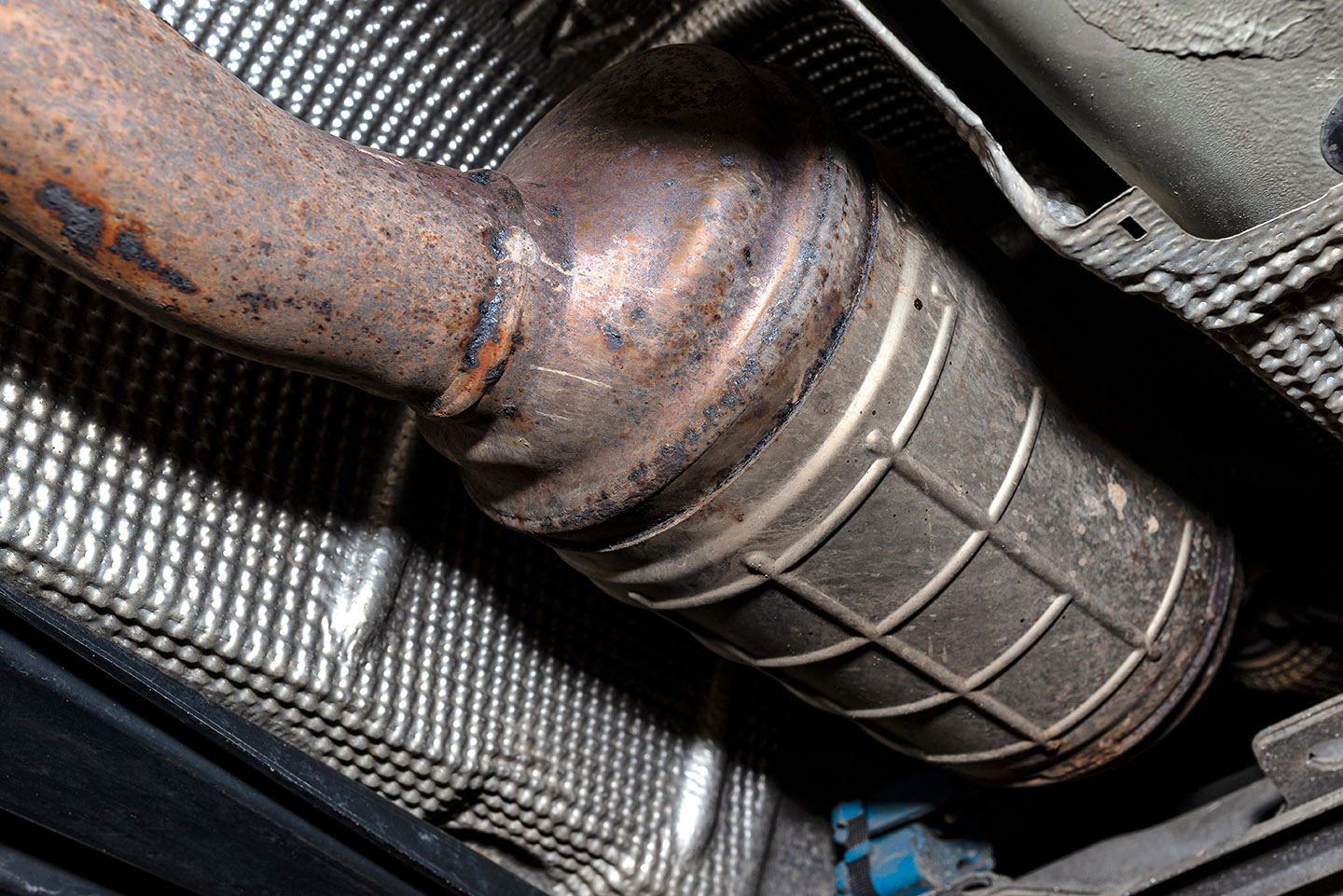What Is a Diesel Particulate Filter (DPF)? When to Change and How to Clean
Nov 30th 2021

If you own a diesel vehicle, you should be familiar with what’s known as the diesel particulate filter, or DPF. Every diesel engine has one to prevent soot and ash from leaking into the exhaust. These particulates reduce air quality and are considered hazardous to those with respiratory conditions. If you’re new to this technology, learn how a diesel particulate filter works, when to change it and how to clean it.
What Does a Diesel Particulate Filter Do?
Diesel exhaust systems can generate all kinds of particulates, including soot, ash and other forms of debris. The DPF is designed to filter out these substances, so the engine runs clean.
It is usually made of a ceramic substrate in the shape of a honeycomb, which helps it collect debris. It is located ahead of the NOx trap and the exhaust pipe but after the temperature sensor.
If you look inside the filter, you will see around 200 cells per square inch, with each cell measuring 3/64" square. Before the exhaust moves through the filter, the air must first be oxidized by a catalyst. The inlet cells on the DPF are plugged at the opposite end, which forces the air through the filter. The particulates become trapped in the substrate walls, which allows the clean air to move past the filter.
Shop Diesel Particulate Filters
When to Change Your Diesel Particulate Filter
Experts agree that it’s best to clean your diesel particulate filter every 100,000 to 124,000 miles, but this is just a rough estimate. It all depends on how you drive. If you spend most of your time at low speeds, the filter will likely get clogged sooner rather than later. High-quality parts, such as the Cummins ISX15 engine filter, is claimed to last up to 400,000 to 600,000 miles, but it will need to be regenerated before that.

Failing to clean the DPF will cause it to fail, which means you could end up relacing it every 100,000 to 124,000 miles or so. If you keep the filter clean, you shouldn’t have to replace it as often. It’s all a part of your annual maintancne checklist. However, once you pass the 100,000-mile threshold, it’s only a matter of time before the device fails outright. At that point, you may need to find replacement diesel particulate filters.
Other factors can cause the DPF to fail sooner than expected. If the fuel isn’t kept at the right pressure, the filter will clog prematurely. Consider finding replacement IPR valves if your filter is failing more often than normal.
Keep Your Fuel Under Pressure with New IPR Valves
How to Clean Your Diesel Particulate Filter
With all that soot and debris running through your filter, it will get dirty from time to time. There are several ways to clean a DPF.
Most exhaust systems will automatically clean the filter using excess heat. This is what’s known as passive regeneration. The added heat burns away the soot and debris, turning the carbon into carbon monoxide. This allows the gas to pass through the filter. Passive regeneration happens nearly every day, usually at high speeds, even if you don’t realize it.
If the engine isn’t producing enough heat to get rid of the debris, it will need to use what’s known as active regeneration. The engine will inject fuel into the exhaust system. It will then be oxidized to generate heat, which converts the soot into carbon monoxide.
You can also add DPF cleaner to the fuel to help the engine get rid of excess soot using regeneration. The cleaner mixes with the particles to create a new compound that can be burned at lower temperatures.
However, this won’t work on ash. No amount of heat can convert ash into CO, so you’ll need to physically remove the filter and clean it by hand. Afterward, you can reinstall it and use it for another 100,000 miles or so, depending on operating conditions.
Find New 6.0 IPR Valves Online
If you need to manually clean the DPF, you will need specialized training and experience. Contact a professional to have them clean or replace your filter for you. If you decide to go the DIY route, use the utmost caution to avoid breaking crucial components. You should only consider this option if you have ruled out all other possible issues. Make sure the exhaust system is working properly, including the EGR and turbocharger. Find replacement 6.0 IPR valves to keep your fuel under the right amount of pressure.

Make sure the engine is off and remove the cover. You will also have to take out the intake piping and disable the EGT, O2 sensor plugs and pressure valves. Finally, remove the heat shielding around the DPF.
Jack up your vehicle to keep it stable. Then disconnect the V clamps around the exhaust system. Remove the EGR filter, underbody shield heat bolts, passenger side axle and the upper DPF bolts.
To remove the DPF, it’s best to rotate it 180 degrees to clear the steer rack. Once you have access to it, it’s best to use a high-pressure cleaning cabinet, which backflushes compressed air into the filter.
You will then need to bake the DPF in a kiln for around 12 hours at 600 degrees. Allow it to cool.
Once it’s been cleaned, put it back into the high-pressure cleaning cabinet to remove any soot that didn’t make it out during the first attempt.
The cells should all be unblocked by the end of the process. You can also use a flow meter to make sure the filter is up to OEM standards.
Use this information to keep your filter clean for as long as possible.
